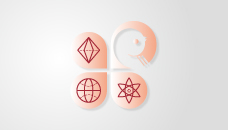[4] X. Feng, X. Ding, D. Jiang, Covalent organic frameworks. Chem. Soc. Rev. 41, 6010–6022 (2012).
Search by keywords or author
- Nano-Micro Letters
- Vol. 16, Issue 1, 114 (2024)
References

Zerui Chen, Wei Zhao, Qian Liu, Yifei Xu, Qinghe Wang, Jinmin Lin, Hao Bin Wu. Janus Quasi-Solid Electrolyte Membranes with Asymmetric Porous Structure for High-Performance Lithium-Metal Batteries[J]. Nano-Micro Letters, 2024, 16(1): 114
Download Citation
Set citation alerts for the article
Please enter your email address



